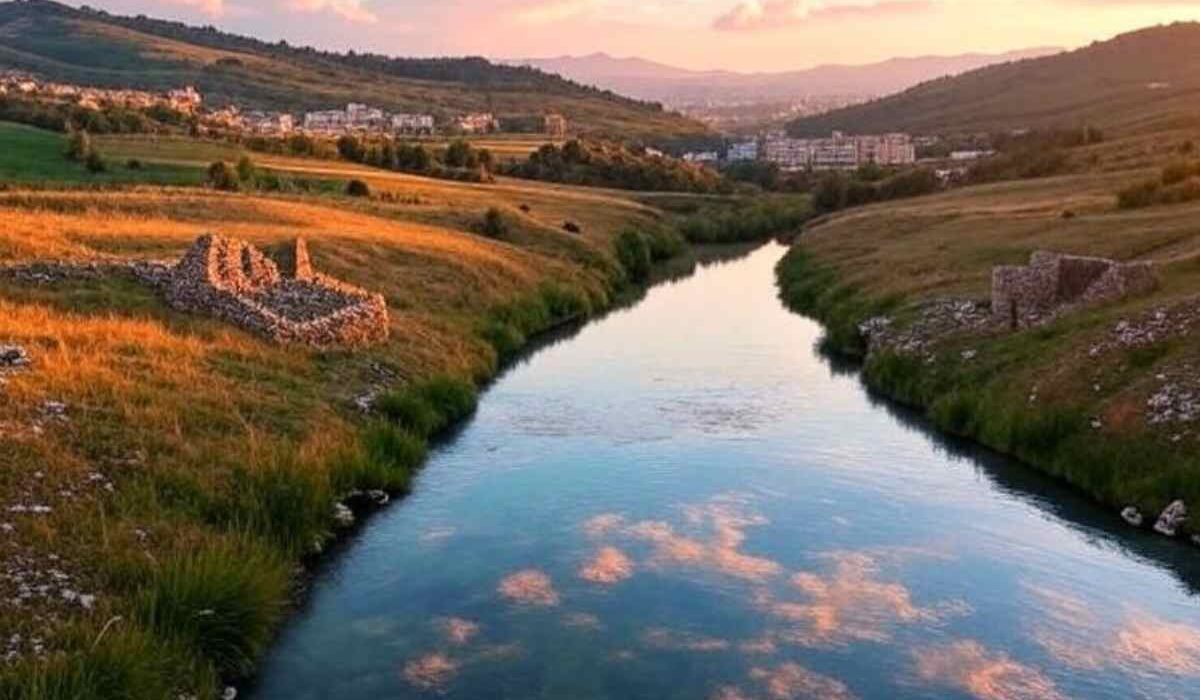The term “girodikiglia” has surfaced in online discussions, notably on platforms like moviesming.org and wishmagzine.com, where it’s described as a destination with a “unique blend of spectacular natural landscapes, rich historical sites.” Yet, the lack of detailed information and its appearance on seemingly unrelated websites raise questions about its authenticity and appeal. This article aims to unpack what girodikiglia might be, its potential as a travel destination, and the critical considerations for travelers in today’s digital age, while examining the broader implications of such ambiguous online narratives.
What is Girodikiglia?
Girodikiglia is presented as a travel destination, though its exact location and nature remain unclear. According to a brief mention on moviesming.org, it offers “stunning natural landscapes” and “rich historical sites,” suggesting it could be a place of cultural and scenic significance. The name itself hints at a possible Italian origin—“giro” meaning “tour” or “circuit” in Italian, and “kiglia” potentially derived from “chiglia” (keel), though the combination is unusual and may be a misspelling or a fictional construct. Wishmagzine.com also references girodikiglia alongside other travel-related terms, but provides no further context, leaving its legitimacy in question.
One possibility is that girodikiglia is a niche or emerging travel spot, perhaps in Italy or a neighboring region, known for its untouched natural beauty and historical landmarks. It might feature attractions like ancient ruins, scenic hiking trails, or coastal views, appealing to travelers seeking off-the-beaten-path experiences. Alternatively, it could be a fabricated or exaggerated destination, promoted through online content to drive traffic to certain websites—a common tactic in the travel blogging industry in 2025, where clickbait often overshadows substance.
The Allure of Girodikiglia
If girodikiglia is a real destination, its appeal lies in the promise of authenticity and discovery. In 2025, as overtourism continues to plague popular spots like Venice and Santorini, travelers are increasingly drawn to lesser-known locales that offer a genuine connection to nature and history. Girodikiglia’s supposed blend of landscapes and historical sites could make it a haven for:
- Nature Enthusiasts: Rolling hills, pristine forests, or dramatic coastlines might provide opportunities for hiking, photography, or simply soaking in unspoiled beauty.
- History Buffs: Ancient ruins, medieval villages, or archaeological sites could offer a window into the past, appealing to those who value cultural immersion.
- Sustainable Travelers: A less commercialized destination might align with the growing trend of ecoconscious travel, allowing visitors to minimize their environmental impact while supporting local communities.
However, the lack of specific details—no mention of a country, region, or notable landmarks—makes it difficult to assess its true value as a travel spot. Without verified reviews, photos, or travel guides, girodikiglia remains a tantalizing but unproven prospect.
A Critical Perspective
The narrative around girodikiglia raises several red flags that warrant scrutiny. First, its mentions on moviesming.org and wishmagzine.com—sites not primarily focused on travel—suggest it might be part of a broader marketing scheme. Moviesming.org, for instance, focuses on entertainment, while wishmagzine.com references girodikiglia alongside unrelated terms like “unfgaming.net,” hinting at possible spam or affiliate link strategies. In 2025, such tactics are common, with websites embedding travel-related keywords to boost SEO or drive clicks to affiliate partners, often exaggerating or fabricating destinations to attract curious readers.
Moreover, the absence of girodikiglia in mainstream travel resources, local government websites, or reputable travel blogs is telling. A genuine destination, even a niche one, would likely have some digital footprint—user reviews on platforms like TripAdvisor, geotagged photos on social media, or mentions in regional tourism boards. The lack of such evidence suggests that girodikiglia might be a fictional or heavily embellished place, designed to capitalize on the allure of “hidden gems” that dominate travel marketing narratives.
This phenomenon reflects a broader issue in the travel industry in 2025: the commodification of wanderlust. As travelers seek unique experiences, marketers exploit this desire by promoting obscure or invented destinations, often with little regard for authenticity. This not only misleads travelers but also risks diverting attention from real, deserving locales that could benefit from tourism. If girodikiglia is a fabrication, it underscores the need for better regulation of online travel content, ensuring that promotions are grounded in verifiable facts rather than hype.
Tips for Travelers Considering Girodikiglia
Given the uncertainty, here are practical steps for travelers interested in exploring girodikiglia—or any similarly obscure destination:
- Research Thoroughly: Look for primary sources like local tourism boards, government websites, or firsthand accounts from other travelers. If girodikiglia lacks such documentation, it’s likely not a viable destination.
- Verify Online Content: Be skeptical of mentions on unrelated websites like moviesming.org. Cross-check claims with reputable travel platforms, and avoid clicking on links that might lead to spam or phishing sites.
- Plan for Safety: If you suspect girodikiglia is real, ensure it has basic infrastructure—accommodations, emergency services, and reliable transportation. In 2025, remote travel requires extra caution due to varying global safety standards.
- Support Sustainable Tourism: If girodikiglia exists, prioritize eco-friendly practices to preserve its natural and cultural assets. Choose local guides, stay in family-run accommodations, and minimize your environmental footprint.
- Report Misleading Information: If girodikiglia turns out to be a fabricated destination, report the misleading content to platforms hosting it. This can help prevent others from being mislead by false travel promotions.
Broader Implications
The girodikiglia narrative highlights the challenges of navigating travel information in the digital age of 2025. On one hand, the internet has democratized travel, making it easier to discover hidden gems and plan trips independently. On the other hand, it has also created a breeding ground for misinformation, where unverified claims can spread rapidly, wasting travelers’ time and money—or worse, exposing them to scams.
Addressing this requires a collective effort. Travel bloggers and websites must prioritize authenticity, providing detailed, verifiable information rather than vague promises. Governments and tourism boards should invest in promoting real destinations, ensuring they’re accessible and safe for visitors. Travelers, meanwhile, must cultivate a critical eye, questioning overly idyllic narratives and seeking out primary sources before committing to a trip.
Looking Ahead
Girodikiglia, as it stands in 2025, remains an enigma—a potential paradise shrouded in uncertainty. Whether it’s a genuine destination waiting to be discover or a cleverly crafted illusion, its story serves as a reminder of the complexities of modern travel. In a world where the desire for unique experiences often clashes with the reality of online deception, travelers must balance curiosity with caution, ensuring that their journeys are as safe as they are rewarding.
Until more concrete information about girodikiglia emerges, it’s best approach as a mystery rather than a must-visit. For now, the true adventure lies not in chasing unverified destinations, but in navigating the ever-shifting landscape of travel with wisdom and discernment.


